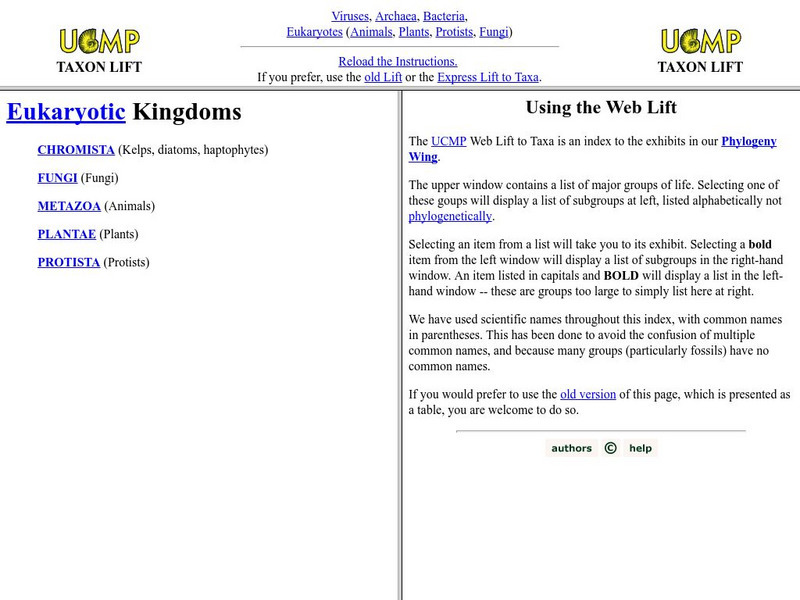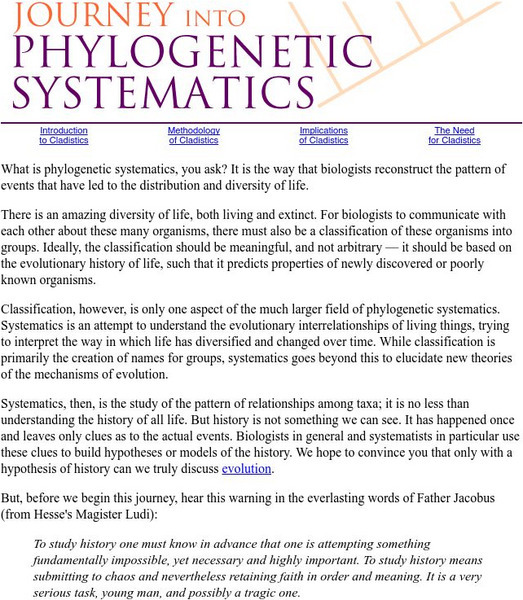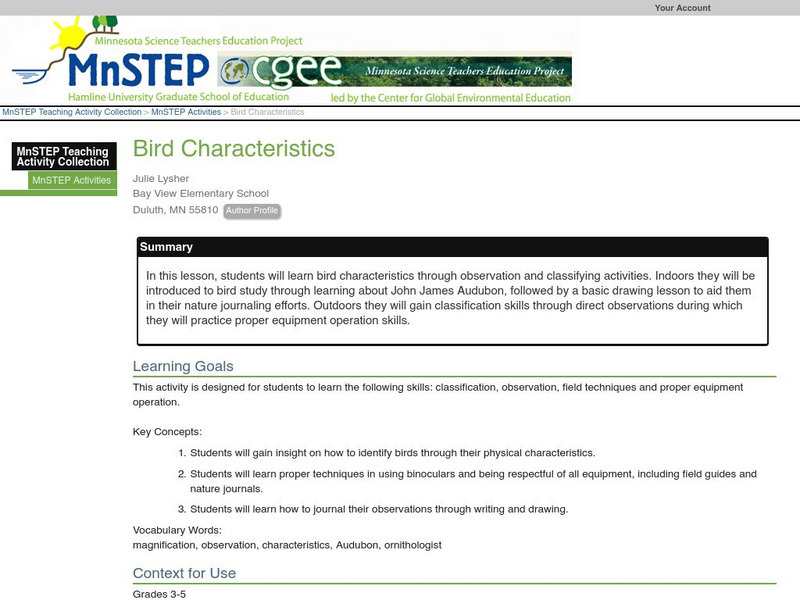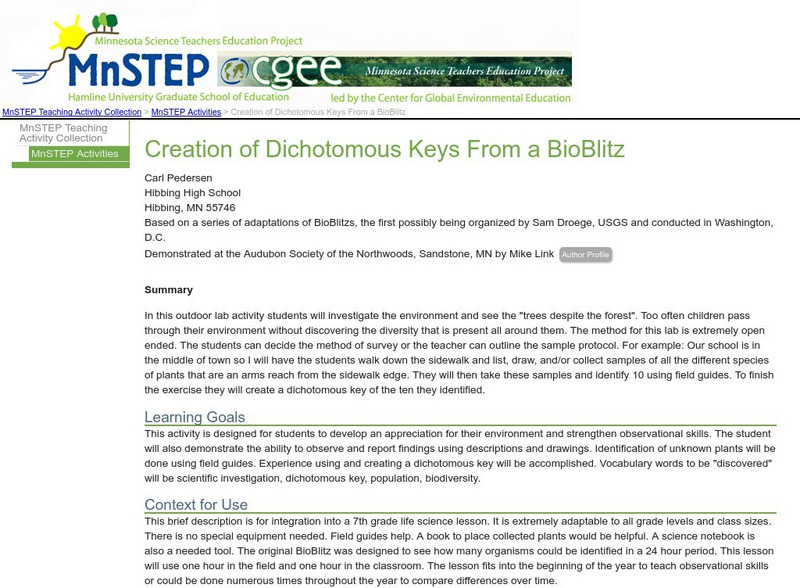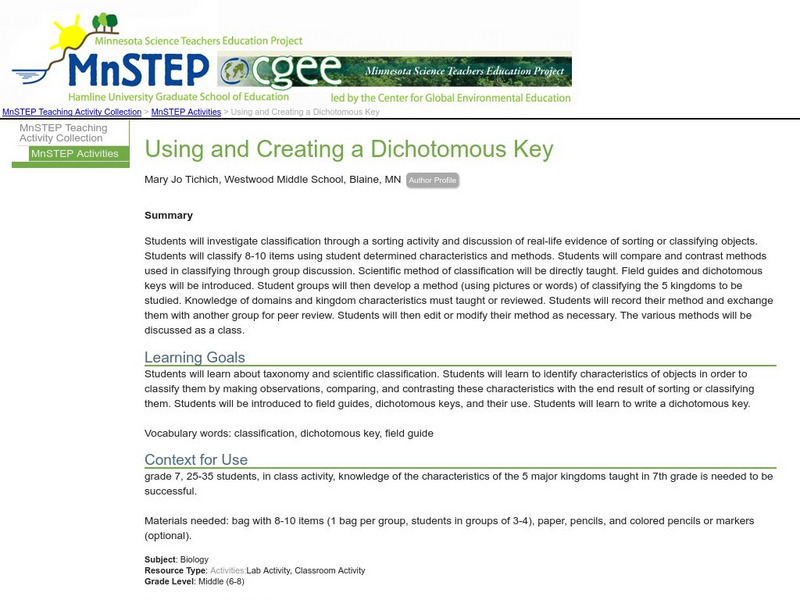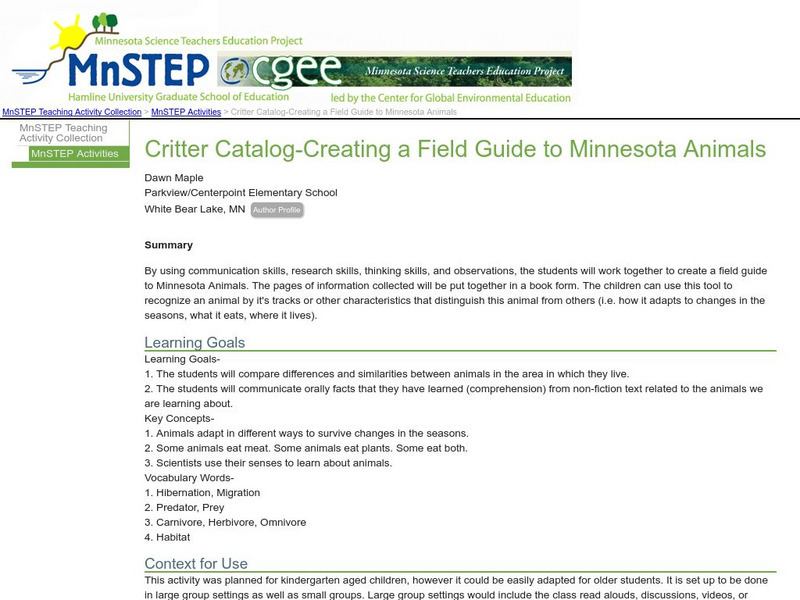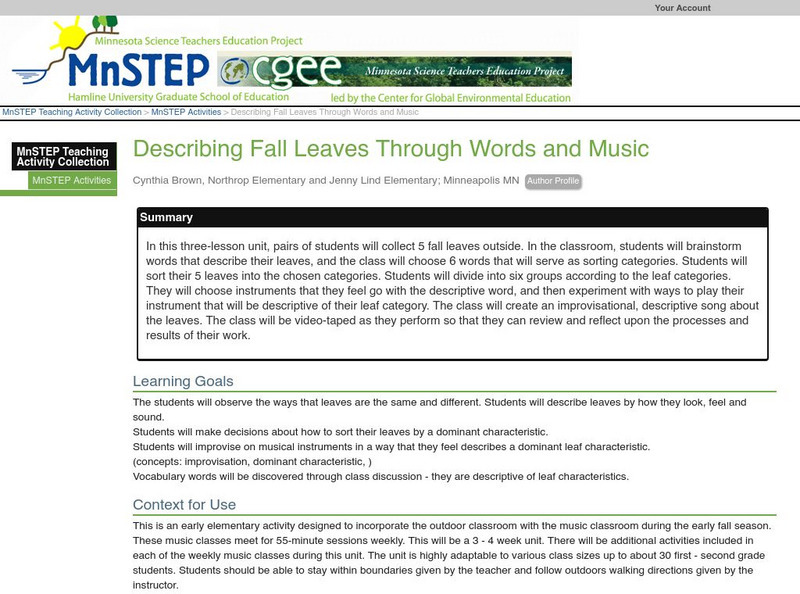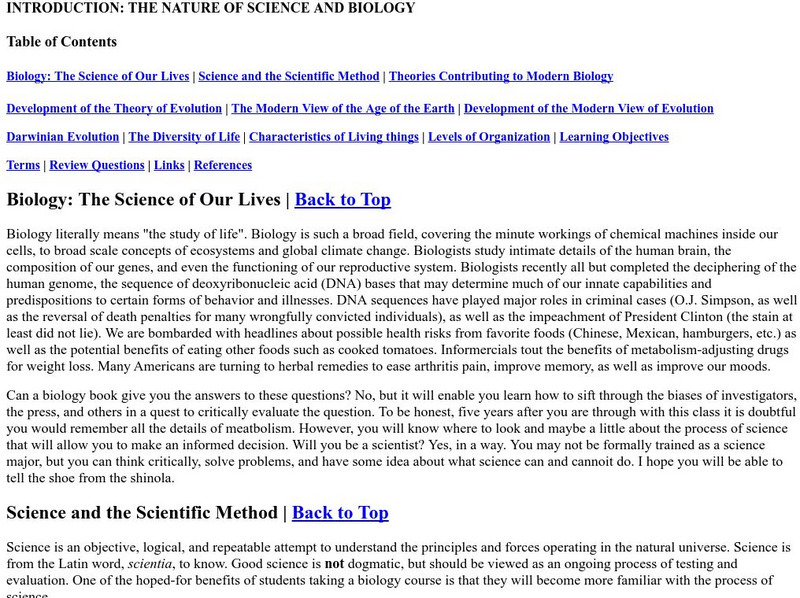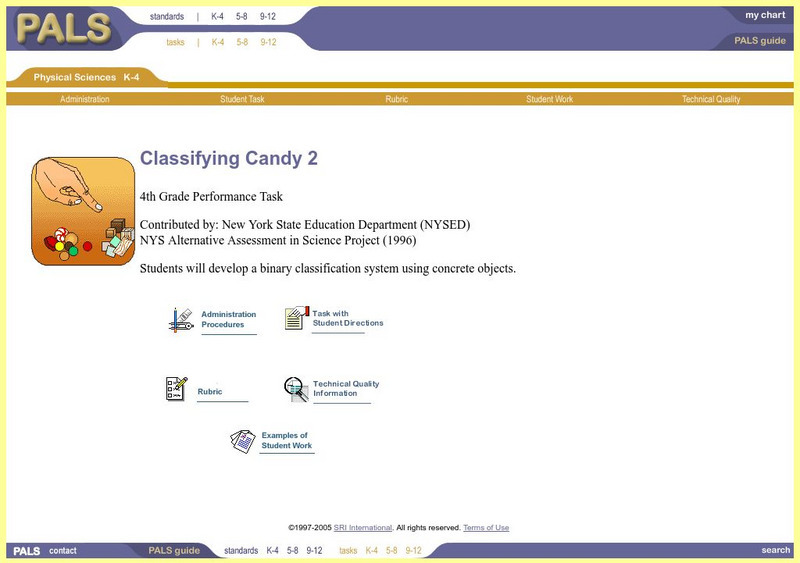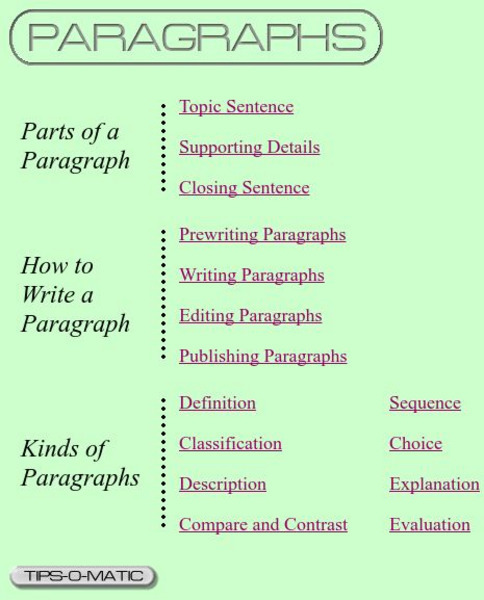E-learning for Kids
E Learning for Kids: Science: Scotland: How Can We Group Non Living Things Based on Characteristics/purposes?
Montgomery is a true Scot, and even wears a kilt. He works in his dad's store and needs help learning about materials.
E-learning for Kids
E Learning for Kids: Science: Scotland: What Are Shadows?
Aggie lives in a cottage near Loch Ness in Scotland. Help her identify shadows and match different objects with their shadows.
Shippensburg University
Shippensburg University: Personality Theories: Jean Piaget
This is an excellent resource on the life and work of the Swiss educational psychologist Jean Piaget (1896-1980).
University of California
Cladistics Notes [Pdf]
Describes readings associated with lecture notes on cladistic classification. Provides definitions of many key vocabulary words used with cladistics.
University of California
Ucmp: Web Lift to Taxa
Alphabetical listing from the University of California of info on each of the animal phyla. Includes scientific and common names and photos. Characteristics of each group are explained in detail.
University of California
Ucmp: Phylogenetic Systematics: Evolutionary Trees
This page provides an introduction to phylogenetic systematics, the way that biologists reconstruct the pattern of events that have led to the distribution and diversity of life. A tutorial "journey" into the Introduction, Methodology,...
Texas Instruments
Texas Instruments: Where Do I Belong?
In this activity, students use Venn diagrams to make several types of classifications.
Science Education Resource Center at Carleton College
Serc: Bird Characteristics
In this instructional activity, students will learn bird characteristics through observation and classifying activities. Indoors they will be introduced to bird study through learning about John James Audubon, followed by a basic drawing...
Science Education Resource Center at Carleton College
Serc: Creation of Dichotomous Keys From a Bio Blitz
An outdoor lab where students investigate the environment and decide a method of survey to identify trees in their area. To finish the exercise they will create a dichotomous key of the ten they identified.
Science Education Resource Center at Carleton College
Serc: Using and Creating a Dichotomous Key
Students will investigate classification through a sorting activity and discus real-life evidence of classifying objects.
Science Education Resource Center at Carleton College
Serc: Using Inquiry to Group Minnesota Critters
Students will observe and investigate various characteristics of Minnesota critters, and then chart and give reasons for the way they grouped them.
Science Education Resource Center at Carleton College
Serc: Introduction to Dichotomous Keys
This lesson serves as an introduction to the classification of plants and animals or trees. Learners will investigate how to classify objects based on their similarities and differences. They will use technical writing to explain their...
Science Education Resource Center at Carleton College
Serc: Critter Catalog Creating a Field Guide to Minnesota Animals
Using communication skills, research skills, and thinking skills the students collaboratively create a field guide to Minnesota Animals.
Science Education Resource Center at Carleton College
Serc: Going on a Leaf Hunt!
Students go outside take a closer look at leaves on a tree. The students collect leaves of different shapes or colors, and then sort into categories, and compare and contrast them to leaves that are non-native to Minnesota.
Science Education Resource Center at Carleton College
Serc: Describing Fall Leaves Through Words and Music
Students collect, describe, and sort leaves found outside. As a cross-curricular component, they will improvise on musical instruments in a way that they feel describes a dominant leaf characteristic.
Science Education Resource Center at Carleton College
Serc: Rock Investigation
In this activity students will observe and investigate rocks in order to classify them in terms of color, shape, texture and size.
Science Education Resource Center at Carleton College
Serc: Identifying Plant Family Characteristics
Students make observations of similarities and differences between three types of garden plants to determine why they are grouped together in one plant family.
Estrella Mountain Community College
Online Biology Book: The Nature of Science and Biology
Use the scientific reasoning and critical thinking to take an in-depth look at the basics of biology.
SRI International
Performance Assessment Links in Science: Classifying Candy 2 (Lesson)
For this fourth grade performance assessment task, students sort candies according to their properties and demonstrate their understanding of binary classification principles.
Wikimedia
Wikipedia: Mammal
Wikipedia, an open-source encyclopedia, provides great information on mammals. Content includes a look at mammal characteristics, origins, classification, and more.
ACT360 Media
Writing Den: Paragraphs
How do you write a paragraph? Use this site to learn more about the different parts of a paragraph.
Ohio State University
Ohio State University: Algae
An introduction to algae and how they fit into the protists. Written for the more advanced student and includes pictures and diagrams to enhance the understanding.
TED Talks
Ted: Ted Ed: How Did Clouds Get Their Names?
Richard Hamblyn tells the history of Luke Howard, the man who classified the clouds and forever changed humanity's understanding of these changeable, mysterious objects. [5:07]
PBS
Pbs: Mathline Creature Feature Lesson Plan [Pdf]
An interdisciplinary math, science, and language arts instructional activity that engages students in an exploration of statistics. Through a study of various forest climates, students utilize data collection and analysis,...





![Cladistics Notes [Pdf] Primary Cladistics Notes [Pdf] Primary](https://d15y2dacu3jp90.cloudfront.net/images/attachment_defaults/resource/large/FPO-knovation.png)
